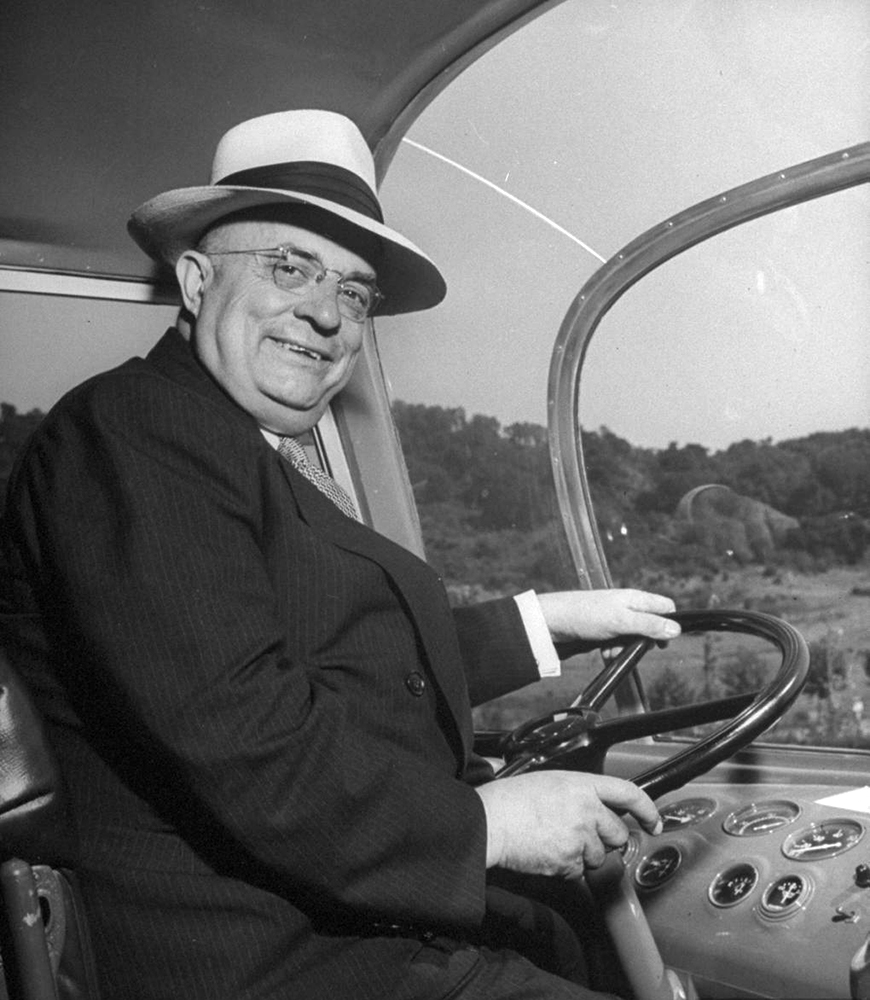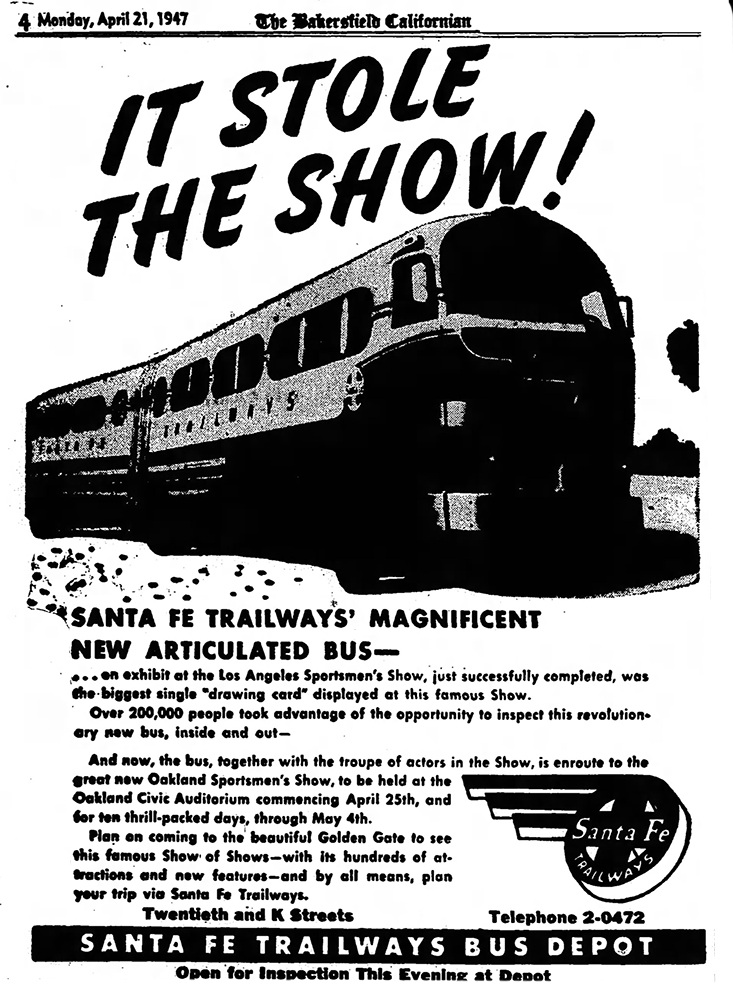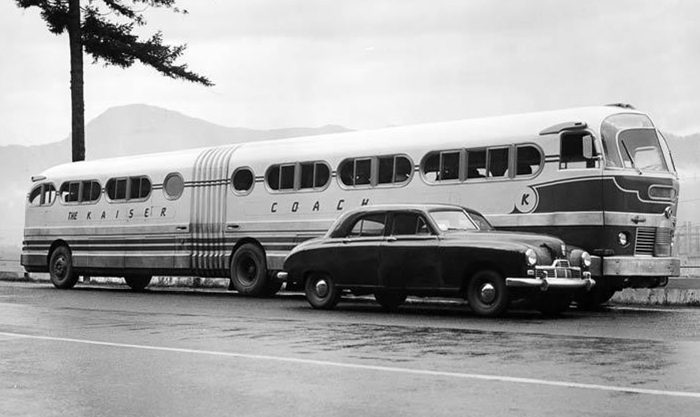Henry J. Kaiser’s Super Bus
Lincoln Cushing, originally published 11/2018, republished 5/14/2022
Henry J. Kaiser loved vehicles: He raced speedboats, built ships for World War II, proposed a fleet of civilian aircraft, built affordable postwar automobiles, and even experimented with helicopters.

What was left?
Big buses. Really big buses.
“The bus of the future” was announced in the Oakland Tribune on August 1, 1946. Unveiled to the public for the first time in Oakland and San Francisco, this marvel of mass transportation was custom built of lightweight magnesium and aluminum. It carried 63 passengers (or 40 passengers, depending on the account) in two articulated sections totaling 60 feet in length. It was operated by a driver and a “co-operator,” in charge of collecting tickets, passenger comfort, announcements, and dispensing refreshments. Each section had a toilet, and the seats could swivel, allowing passengers to “play cards or converse.”

The ride was promoted by would-be Don Drapers as being “like a cloud,” suspended on “torsilastic springs” manufactured by B.F. Goodrich. It was powered by a 275-horsepower supercharged Cummins diesel engine, a precursor to the powerplant Kaiser used in the 1952 Indianapolis 500.
The bus was prepared for Santa Fe Trailways (later Continental Trailways, part of National Trailways Bus System) at the Kaiser Permanente Metals Corporation plant near Los Altos as a prototype. Eventual production options included the recently closed Kaiser Richmond shipyard number 3. These were intended for longer routes between train stations, not urban transportation.
In April 1947 the bus was the featured leaving Oakland for Los Angeles with members of the cast of the Southern California Sportsmen’s Show. News accounts noted that the bus, “approximately twice the length of the standard bus and equipped with many luxury features, will be open for public inspection.”

Alas, the fleet of super buses never materialized, although this prototype entered regular service between Los Angeles and San Francisco through 1951. At the time, Henry J. Kaiser was busy with his Kaiser-Frazer automobile company, and the “bus of the future” was one project that never gained traction.
In early 1966, the Alameda County (California) Transit Authority announced plans to roll out a new, 77-passenger articulated bus dubbed the “Freeway Train,” described as the first in the nation to be used for public transportation.
Well, the first after Henry Kaiser’s.
Images:
Publicity shot of Henry J. Kaiser at wheel of his superbus
Ad from the Bakersfield Californian touting bus at Sportsmen’s Show, April 21, 1947
Kaiser Coach photo, 1947
Return to Docs Populi /Documents for the Public